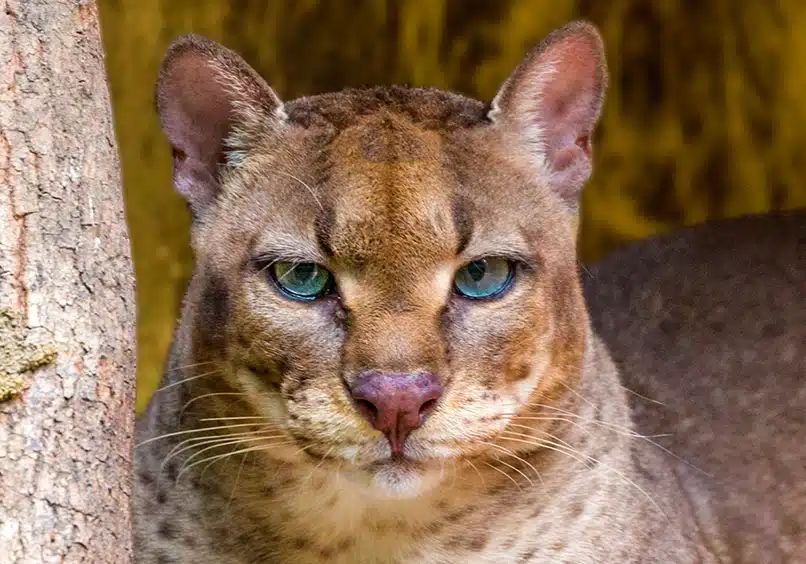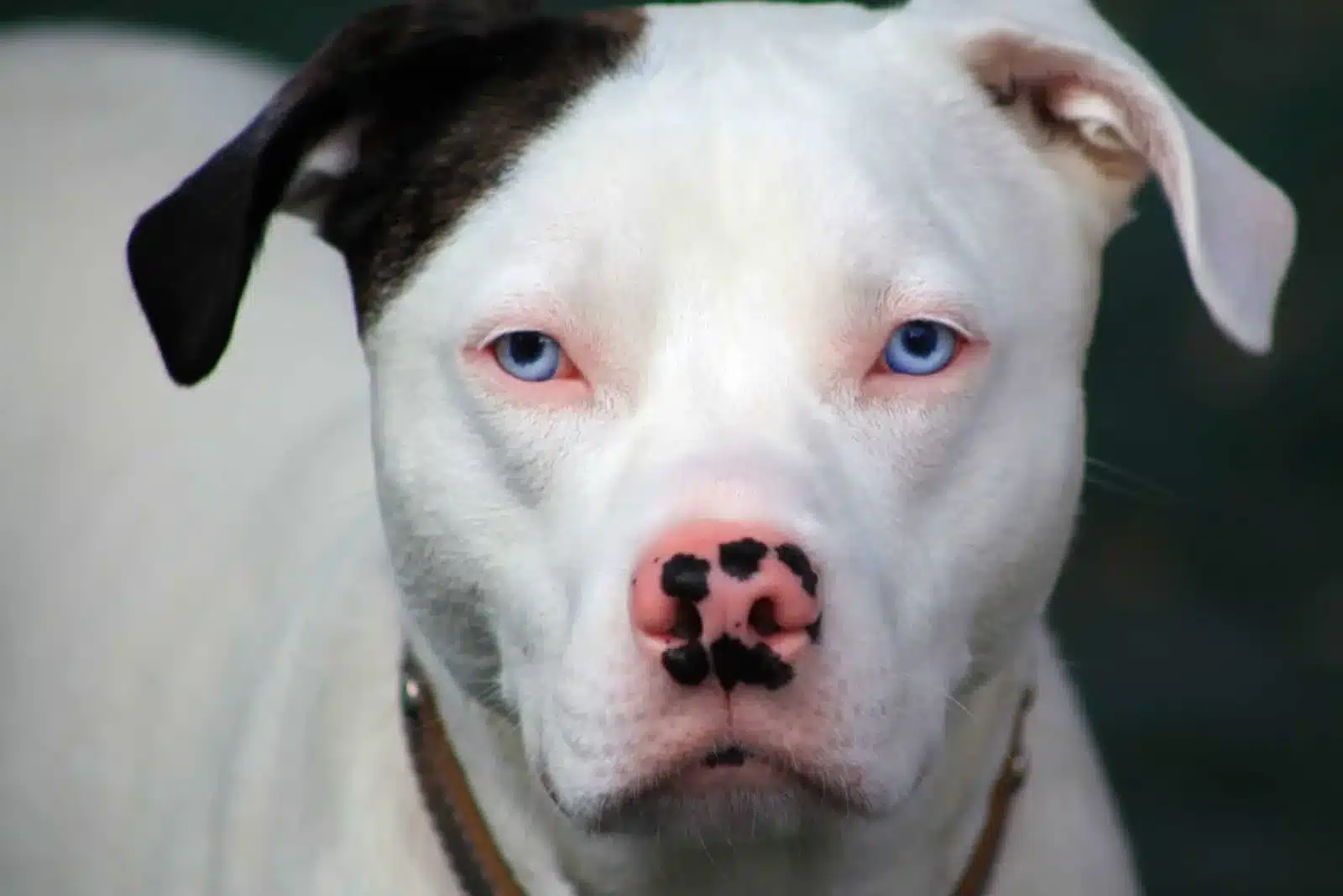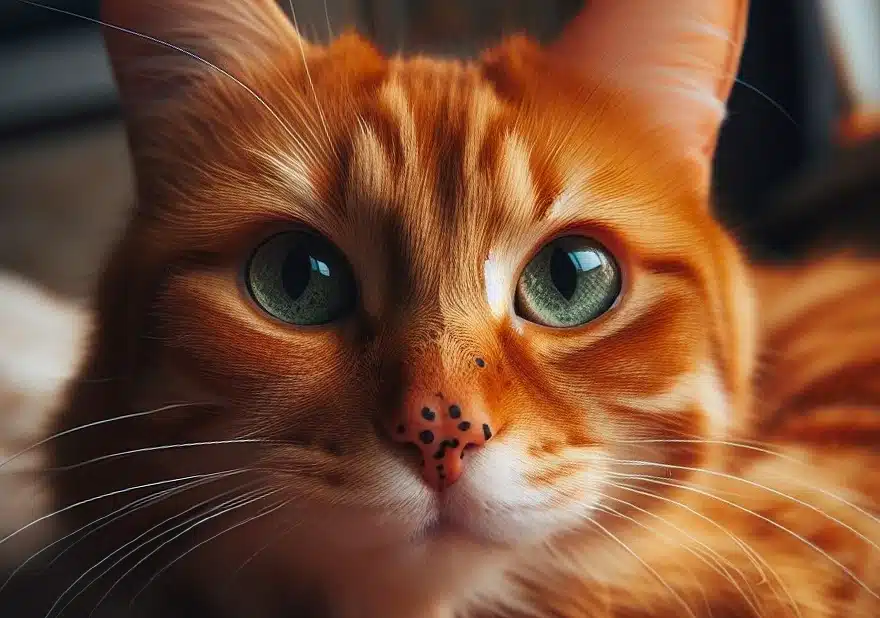Unusually Hairless Mammals: The Cute, The Funny, And The Just Plain Scary
Ads Disclosure ?
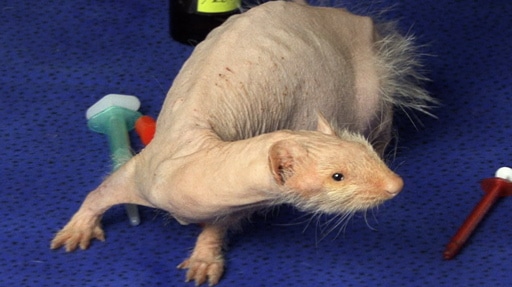
Humans expect a certain amount of hair loss as we age, especially men who are prone to becoming partially or completely bald as they grow older. Most other animals don’t share this unfortunate human trait, so it’s quite rare to see bald mammals or birds without their distinctive fur or feathers.
Some animals are naturally hairless due to evolutionary traits that provide them with benefits in their specific environments. For example, cetaceans, a group that includes whales, dolphins, and porpoises, are largely hairless and have evolved smooth skin that enhances their ability to move through water efficiently.
On land, hairlessness can also be observed in certain species like the naked mole-rat. Similarly, domestic animals such as the sphynx cat or the Chinese crested dog are known for their distinctive lack of coat, which is a result of selective breeding practices by humans.
Occasionally, however, individuals that belong to a species usually covered in fur, feathers, or scales – are unusually “bald”. These animals can lose their hair as a result of either a genetic mutation or a medical condition (like Alopecia), or other factors such as stress.
Jump To Section
Types of Hairless Animals
In the animal kingdom, hairlessness can occur naturally or as a result of human intervention. Some species are inherently hairless, while others may lose their hair due to genetic variations, selective breeding, or certain medical conditions.
Naturally Hairless Species
Some species are evolutionarily hairless, often as an adaptation to their environment. For instance, marine animals like dolphins and walruses have evolved hairlessness to streamline their bodies for more efficient swimming. On land, the African Elephant is a virtually hairless giant, possessing sparse, bristle-like hair that aids in heat dissipation in its arid habitat.
Occasionally, relatives of usually-furry species can be hairless, too: the naked mole-rat, for example, thrives in subterranean habitats where a furry coat would be more of a hindrance than a help.
Selective Breeding for Hairless Animals
Humans have selectively bred certain animals to accentuate the trait of hairlessness. The Sphynx cat, known for its lack of coat, is a prominent example of a pet created through such selective breeding practices. Similarly, hairless dog breeds like the Chinese Crested and Xoloitzcuintli are bred for their distinctive appearance and hypoallergenic qualities.
Unusually Hairless Animals
Some animals exhibit unique hairlessness not as a characteristic of their species or breed, but due to rare genetic mutations. For example, there have been instances of spectacled bears suffering a rare condition that prevents them from growing fur. Similarly, individual animals like raccoons, deer, and even squirrels have been observed with such mutations, resulting in a completely hairless appearance that distinguishes them from their typical furry counterparts.
Medical Conditions Causing Hair Loss
Animals may become hairless due to medical conditions. Sarcoptic mange, caused by mite infestations, can lead to significant hair loss in many species, including dogs. Such conditions not only affect the health of the individual animal but can also have broader implications on their populations in the wild.
Hairless Mammals
While most mammals are covered in fur, certain conditions and genetic traits can lead to hairlessness. This phenomenon occurs either naturally or as a result of a disease. Here, we will explore a selection of examples and ask the question:
Can you recognize these unusually bald mammals without their fur?
Echidna
This echidna exhibits extremely sparse spines. Although not entirely hairless, it differs significantly from its species’ “normal” look!
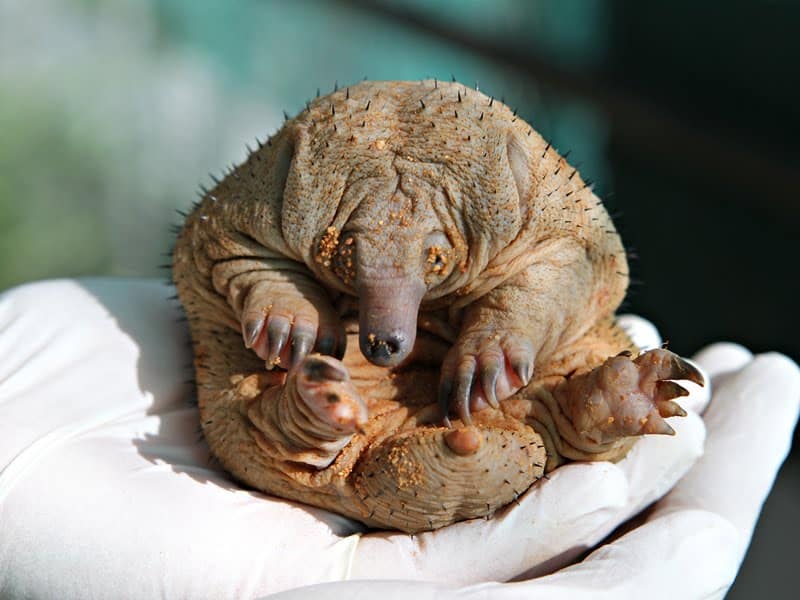
Chimpanzee
Chimpanzees can experience hair loss due to alopecia, resulting in a them appearing partially or entirely hairless.

Raccoon
In cases of disease or genetic mutations, a raccoon may display hairlessness, though this is an uncommon trait for the species.
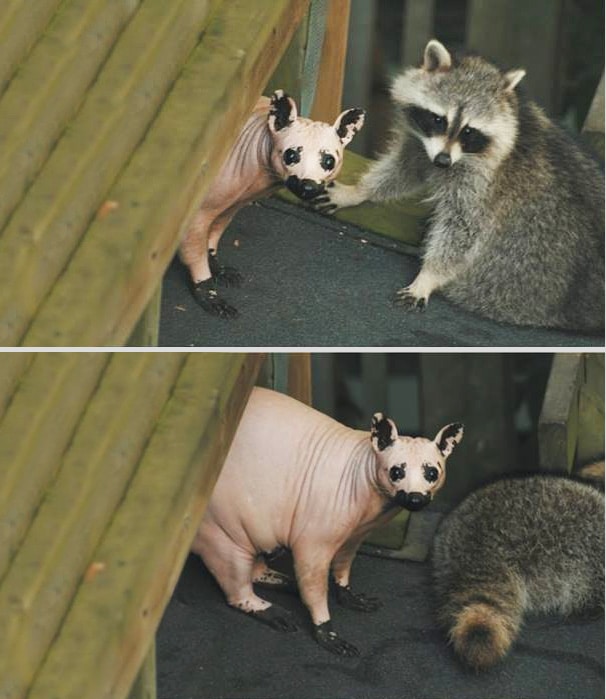
Here’s another hairless raccoon, which still has a little fuzz:

Horse
This foal has a rare genetic skin condition known as Congenital Hypotrichosis. Horses suffering from this condition may be born completely hairless.

Guinea pig
Several breeds of guinea pigs have been selectively bred to have little to no hair, making the hairless variants a popular choice for pet owners.
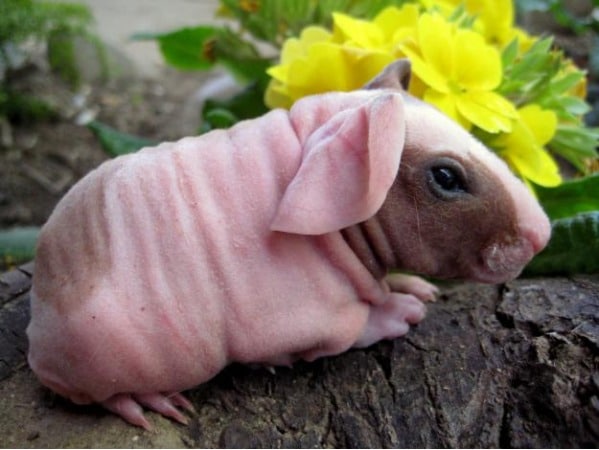
Black bear
Instances of black bears losing their fur are documented, often due to illness. These bears can develop a hairless condition which is starkly contrasting their typically shaggy appearance.

Spectacled bear
At Germany’s Leipzig Zoo, all female members of another species of bear – the Spectacled Bear – completely lost their fur. In fact, the hairless spectacled bear named Dolores became quite an international sensation.
Fox
Hair loss in foxes can occur due to mange, making these normally bushy-tailed animals appear completely hairless.

Ferret
Hairlessness in ferrets typically arises from adrenal gland disease, which can cause significant hair loss over their bodies.

Deer
Deer may suffer from a condition called fibromatosis, which can cause them to lose fur and exhibit hairless patches or even a total loss of fur.
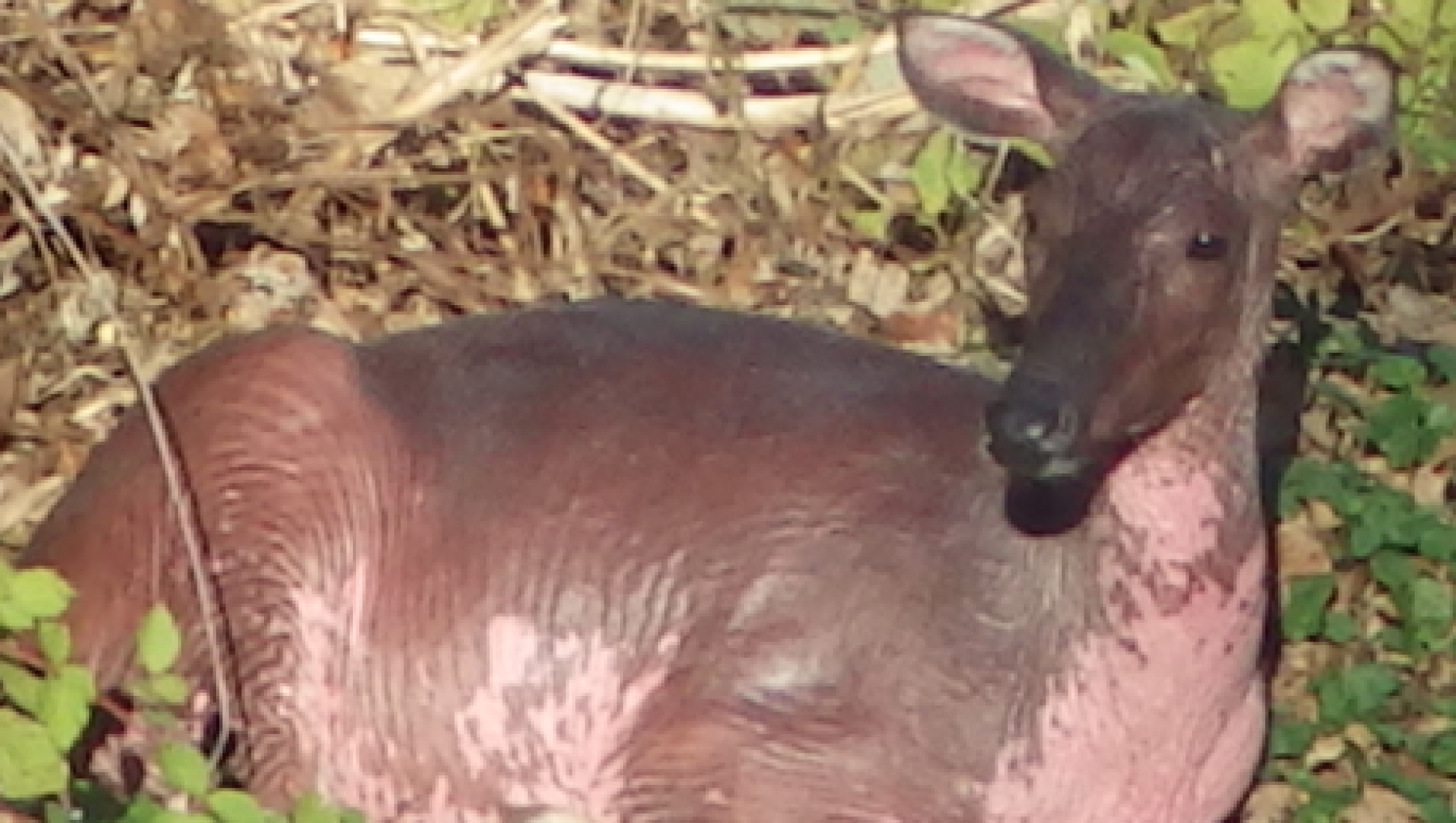
Hedgehog
Hedgehogs can be born without spines due to a genetic condition, resulting in a “hedgehog without spines” and a distinctly hairless appearance.

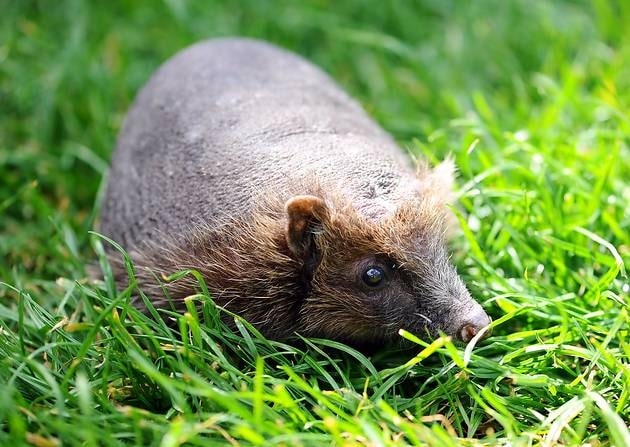
Monkey
Certain monkeys can exhibit hairlessness, usually as a result of health conditions, showcasing their bare skin.
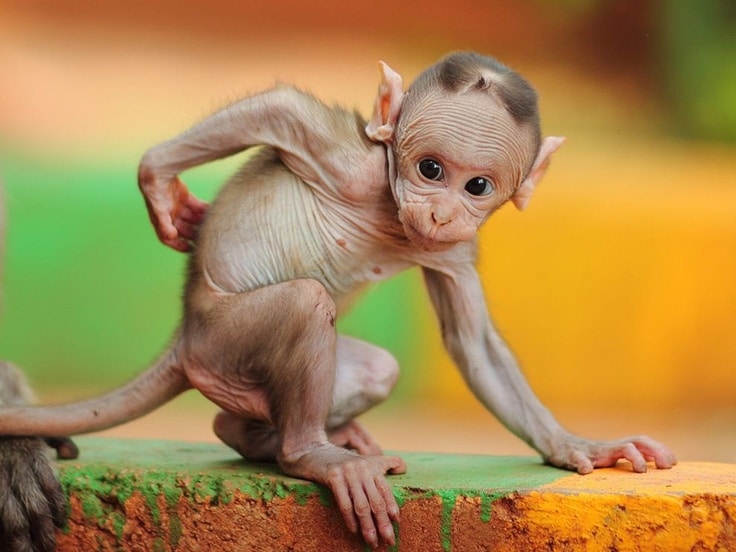
Baboon
Baboons with alopecia can have bald patches or be nearly hairless.

Here is a cuter-looking bald baboon:

Rat
Hairless rats, known as Sphynx rats, have been bred specifically for their lack of fur, which is due to a genetic mutation.

Rabbit
A rabbit with alopecia or genetic mutations may be hairless, appearing quite different from the typical fluffy creature.
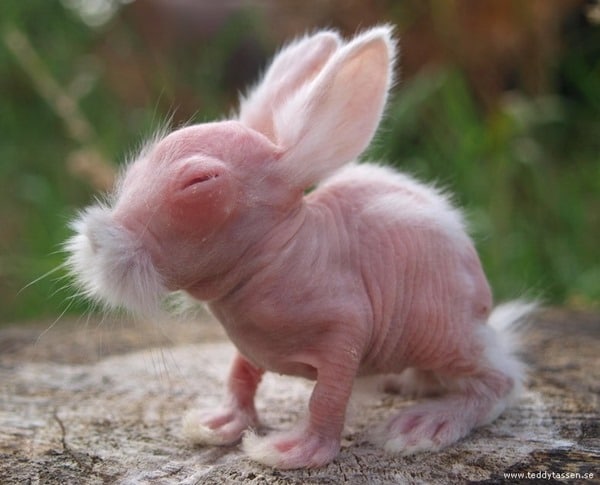
Squirrel
Although rare, a squirrel may become hairless due to disease, making their normally bushy tails and bodies appear naked.
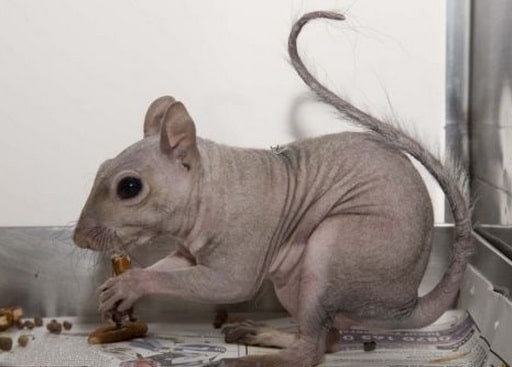
Kangaroo
Some kangaroos can also be affected by hair loss, which can be attributed to genetic conditions or skin disorders.

Birds Without Feathers
Certain conditions can result in a bird losing its feathers (either partially or completely), with causes ranging from genetic disorders to environmental factors. Unlike mammals, birds without feathers are extremely unlikely to be able to survive in the wild.
Also, if you thought some of these hairless mammals looked strange, that’s nothing compared to some of these featherless birds.
Frequently Asked Questions
Can animals be hairless due to genetic conditions?
Yes, certain animals can be naturally hairless due to genetic conditions. For instance, the Sphynx cat is a breed known for its lack of a fur coat as a result of a genetic mutation.
What are the care requirements for hairless pets?
Hairless pets often require specialized care, such as regular bathing to remove oil build-up on their skin and protection from the sun. A comprehensive care approach for such unique pets is outlined in guides like the one on Wellness Wag.
Are there hairless animal species that live in the wild?
While most mammals possess some form of fur or hair, there are indeed species that are naturally hairless. An example is the Naked Mole Rat, which is hairless and adapts to its underground habitat. Other examples include the African Elephant and marine species such as dolphins and seals.

